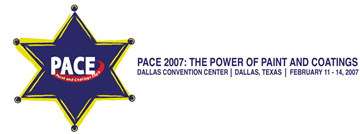Search
Products tagged with 'material selection'
View as
Sort by
Display
per page
Establishing Corrosion Management Strategies for Hydroprocessing Unit Using CMP and IOW at Project Stage
Product Number:
MPWT19-14452
Publication Date:
2019
$0.00
Evaluation Of Dead Leg Piping with Internal Corrosion at A Salt Dome Natural Gas Storage Facility
Product Number:
51323-19041-SG
Publication Date:
2023
$20.00
Evaluation of Resistance to Cracking of Concrete Repair Materials
Product Number:
41207-300-SG
Publication Date:
2007
$20.00
Failure Cases Of Super Duplex Stainless Steel Pump Components
Product Number:
51322-17689-SG
Publication Date:
2022
$20.00
Going Beyond Standard Corrosion Prevention Efforts and Getting Improved Life Cycle of Wind Energy Equipment
Product Number:
51220-264-SG
Publication Date:
2020
$20.00
How Fluoropolymers Resist Chemical Attack across the pH Spectrum
Product Number:
51324-20603-SG
Publication Date:
2024
$40.00
Investigation of passive film formation on UNS N08935 in high chloride solution – Alternative method for advanced material selection
Product Number:
51323-19266-SG
Publication Date:
2023
$20.00
Material Selection for Carbon Capture and Storage (CCS) Wells
Product Number:
51323-18760-SG
Publication Date:
2023
$20.00
Material Selection for CCUS Injection Well: A Case Study in North Sea
Product Number:
51324-21062-SG
Publication Date:
2024
$40.00
Material Selection Methodology Using Halite Tendency Indicators for Gas Wells: A Case Study
Product Number:
51320-14586-SG
Publication Date:
2020
$20.00
Moisture Mitigation in Concrete Floors and Walls
Product Number:
41210-563-SG
Publication Date:
2010
$20.00












